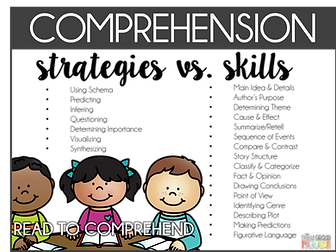
Crenshaw Elementary
Phonemic awareness is the knowledge that words are made up of a combination of individual sounds. For example, the word cat is made up of three sounds (phonemes) /c/ /a/ and /t/. When these three sounds are combined fluidly, they make up the word cat. If a child knows that cat, car, and caboose all have the same sound at the beginning of the word, she has phonemic awareness. In other words, she is aware that the /c/ sound (phoneme) begins each of those three words. Phonemic awareness is more than recognizing sounds. It also includes the ability to hold on to those sounds, blend them successfully into words, and take them apart again. For example, in addition to the knowledge that the word cat has three separate sounds, phonemic awareness is the ability to blend these three sounds together to form the word cat and, when asked, to identify and separate the sounds within the word.

Phonics is the relationship between a specific letter and its sound, only as it relates to the written word. Phonics is used, for example, when a reader comes across an unknown word. With knowledge of phonics, he can try to read the word by focusing on the specific sound of each letter or combination of letters. For example, if a child does not recognize the word chant, he might break the word apart into pieces, such as /ch/ /a/ /n/ /t/ (or /ch/ /a/ /nt/, or /ch/ /ant/), assigning an appropriate sound to each separate letter or combination of letters. Then, the child combines those sounds to create the word chant.
When children learn to read, they begin to understand that the words on the page correspond to the words they encounter every day in spoken English. That’s why it’s much easier for children to make sense of written words that are already part of their oral language. While we don’t have to know every word on the page to understand what we are reading, too many new or difficult words make comprehension impossible. As children’s reading level improves, so does the number of words they need to know.
Children increase their vocabulary through both direct and indirect instruction. Children continually learn new words indirectly through listening and speaking to the people around them, being read to by others, and reading on their own. Sometimes children need to be taught new words explicitly, especially when they are crucial to their understanding of a story or concept. Study in content areas, such as science and social studies, adds to a child’s vocabulary development.


Fluency is the ability to read text accurately and smoothly. When fluent readers read aloud, their expression, intonation, and pacing sound natural — much like speaking. This does not mean that fluent readers never make mistakes. Fluency develops from reading practice. The same reader may read a familiar text fluently and a new, more challenging text less fluently.
Text comprehension is the interaction that happens between reader and text. More than merely decoding words on a page, comprehension is the intentional thinking process that occurs as we read — it’s what reading is all about. It is the ultimate goal of reading. The National Reading Panel (NICHD, 2000) states that "reading comprehension is a cognitive process that integrates complex skills and cannot be understood without examining the critical role of vocabulary learning and instruction, and its development and active interactive strategic processes are critically necessary to the development of reading comprehension."
